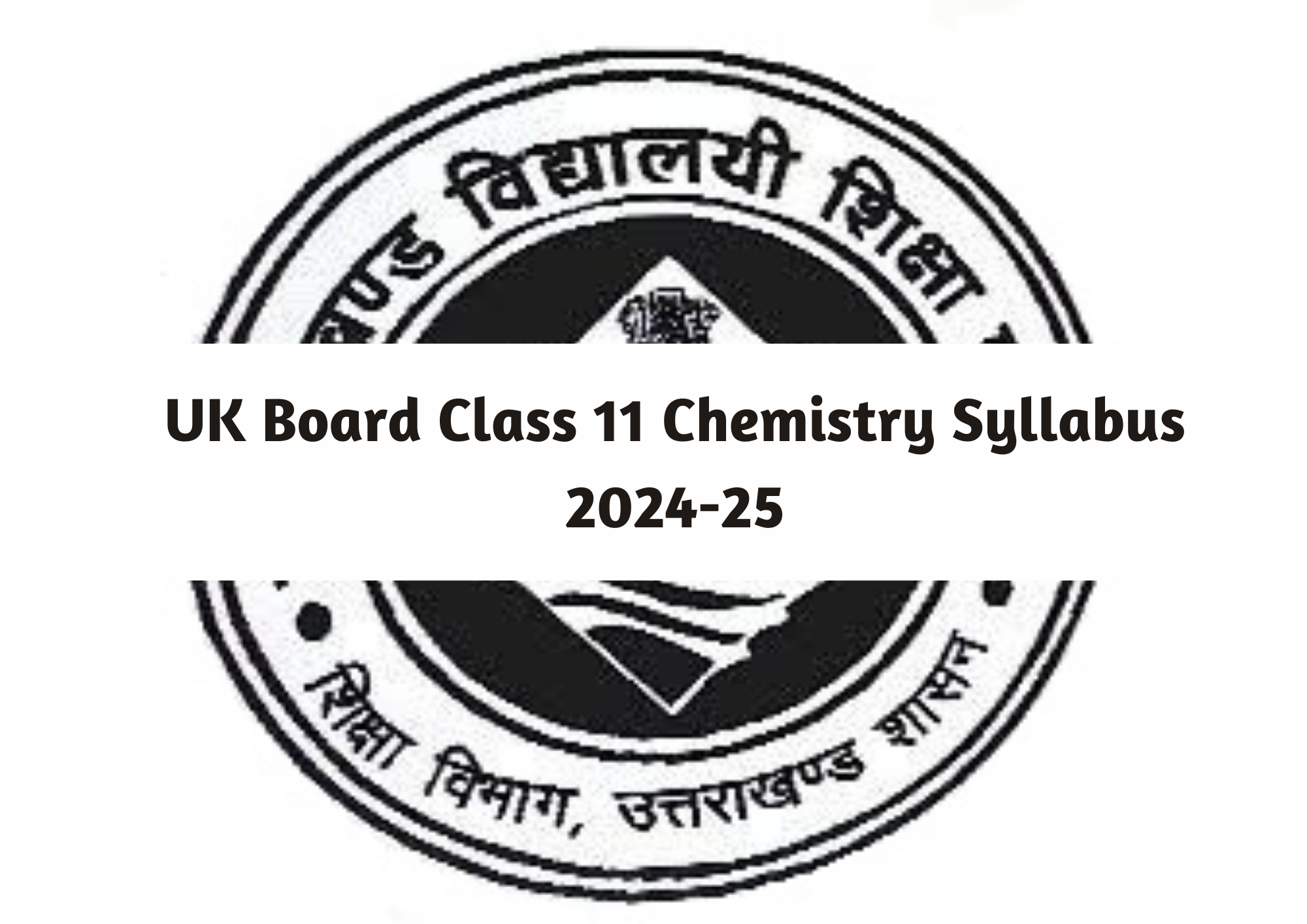
UK Board Class 11 Chemistry Syllabus 2024-25
The Class 11 Chemistry syllabus for the academic year 2024-25 under the UK Board is meticulously crafted to provide students with a comprehensive understanding of fundamental chemical principles and their applications. This syllabus aims to foster critical thinking, analytical skills, and a deep appreciation for the role of chemistry in everyday life and technological advancements. By integrating theoretical knowledge with practical experiments, the syllabus encourages hands-on learning, ensuring students grasp concepts through exploration and discovery. With a focus on both foundational concepts and contemporary developments, the UK Board Class 11 Chemistry syllabus prepares students for academic excellence and future scientific pursuits.

Source: Amar Ujala
The Uttarakhand Board of School Education (UBSE) has recently unveiled the much-awaited Class 11 Chemistry syllabus for the academic year 2024-25. This comprehensive syllabus not only delineates the course structure but also highlights the pivotal role that Chemistry plays in understanding the fundamental aspects of matter, reactions, and their applications across various domains.
Course Structure and Syllabus Breakdown
The Class 11 Chemistry curriculum under UBSE for the upcoming session is structured to provide students with a deep insight into the intricacies of chemical phenomena. The syllabus is divided into various units, each focusing on distinct areas of Chemistry:
Unit I
This unit introduces students to the importance and scope of Chemistry. It covers Dalton’s atomic theory, laws of chemical combination, atomic and molecular masses, the mole concept, and stoichiometry. Students will learn about empirical and molecular formulas, chemical reactions, and calculations based on stoichiometry.
Unit II
Here, students explore the structure of atoms, starting from the discovery of subatomic particles (electrons, protons, and neutrons) to the development and limitations of models by Thomson, Rutherford, and Bohr. The unit also covers concepts such as shells, subshells, quantum numbers, electronic configurations, and the stability of orbitals.
Unit III
It includes a historical perspective on the periodic table, modern periodic law, and trends such as atomic and ionic radii, ionization enthalpy, electron gain enthalpy, electronegativity, and valency. The nomenclature of elements with atomic number greater than 100 is also discussed.
Unit IV
Chemical bonding is explored in this unit, covering topics like ionic and covalent bonds, bond parameters, Lewis structures, VSEPR theory, hybridization, molecular orbital theory (qualitative idea), and hydrogen bonding. The unit provides insights into the nature of chemical bonds and the geometry of molecules.
Unit V
Students learn about the concepts of system and surroundings, different types of energy, state functions, the first law of thermodynamics (internal energy and enthalpy), Hess’s law, enthalpy changes in various processes, and an introduction to the second and third laws of thermodynamics.
Unit VI
Equilibrium in physical and chemical processes is studied here, including the law of mass action, equilibrium constants, factors affecting equilibrium (Le Chatelier’s principle), and ionic equilibrium. The unit also covers concepts like pH, hydrolysis of salts, buffer solutions, and solubility products.
Unit VII
This unit introduces students to oxidation-reduction reactions, oxidation numbers, balancing redox reactions, and applications of redox reactions in different contexts. Students learn to identify redox reactions based on changes in oxidation states.
Unit VIII
Organic chemistry is introduced with topics such as methods of purification, qualitative and quantitative analysis, classification, and IUPAC nomenclature of organic compounds. Concepts like electronic displacements in covalent bonds and types of organic reactions (free radicals, carbocations, carbanions, electrophiles, and nucleophiles) are also covered.
Unit IX
Aliphatic hydrocarbons include alkanes, alkenes, and alkynes, focusing on nomenclature, isomerism, physical properties, and chemical reactions. Aromatic hydrocarbons, especially benzene, are studied for their resonance, aromaticity, and electrophilic substitution reactions.
- Theory: 70% of the overall marks, encompassing thorough coverage of all units.
- Practical: 30% of the total marks, which includes practical experiments, project work, and continuous assessment through class records and viva.
Practical assessments play a crucial role in reinforcing theoretical concepts and nurturing practical skills among students. Here’s a breakdown of the practical work evaluation scheme:
- Volumetric Analysis: 6 marks
- Salt Analysis: 6 marks
- Content-Based Experiment: 5 marks
- Project Work: 4 marks
- Class Record and Viva: 4 marks
- Continuous Assessment (Unit Test): 5 marks
These components not only contribute to the overall assessment but also provide students with hands-on experience, fostering a deeper understanding of chemical principles through practical application.
Download the Link and Further Resources
To facilitate easy access for students and educators, UBSE has made the Class 11 Chemistry syllabus PDF available for download. This document includes detailed unit-wise topics, marking schemes, and guidelines for practical work. Interested individuals can download the syllabus PDF from the official UBSE website or through authorized educational portals.
To download the PDF “Click here“
The release of the UK Board Class 11 Chemistry Syllabus for the academic session 2024-25 marks a significant step towards structured and comprehensive learning in the field of Chemistry. By offering a balanced mix of theoretical concepts and practical applications, UBSE aims to equip students with the requisite knowledge and skills to excel in their academic pursuits and beyond. For further details and to access the syllabus PDF, students are encouraged to visit the UBSE website or refer to authorized educational resources. Embrace the journey of discovery and exploration in Chemistry, as it unfolds through this meticulously designed syllabus.




